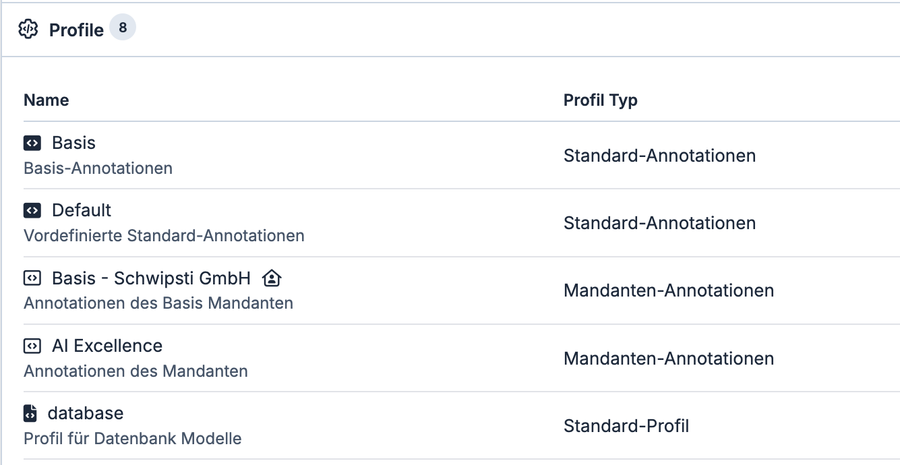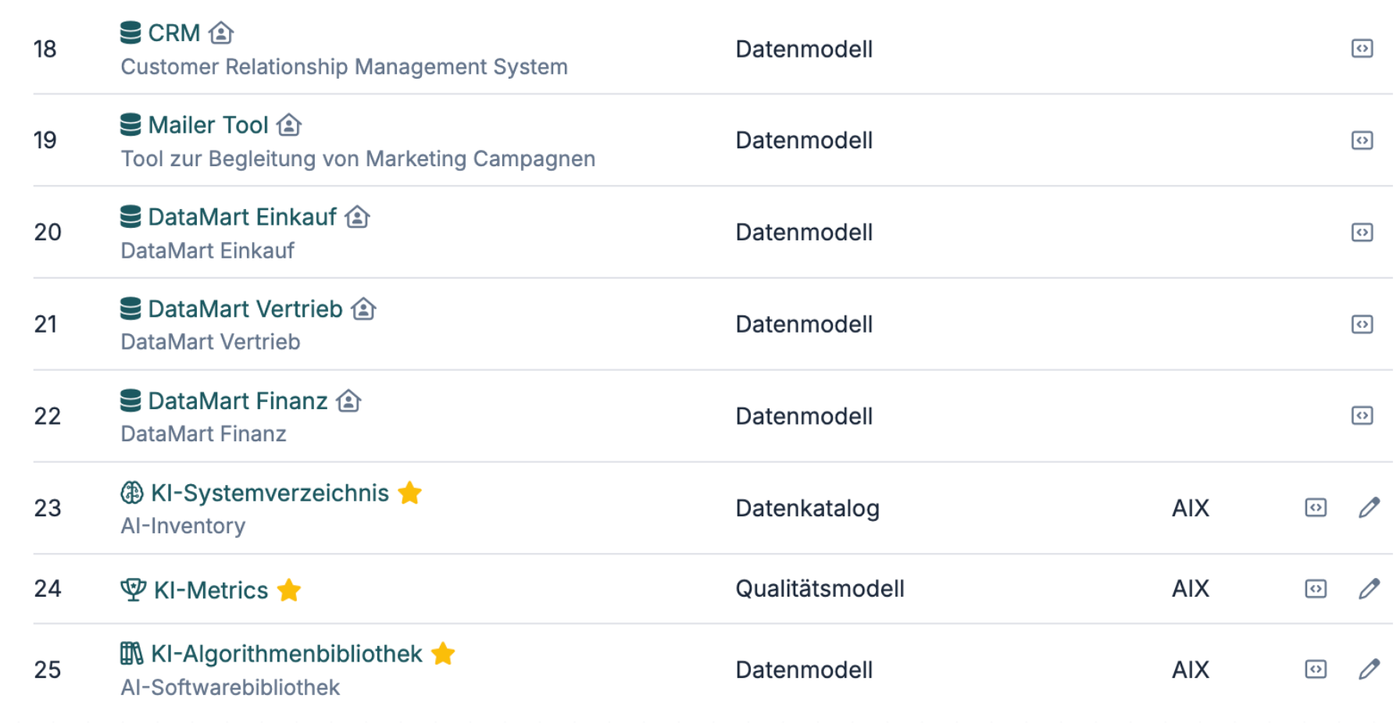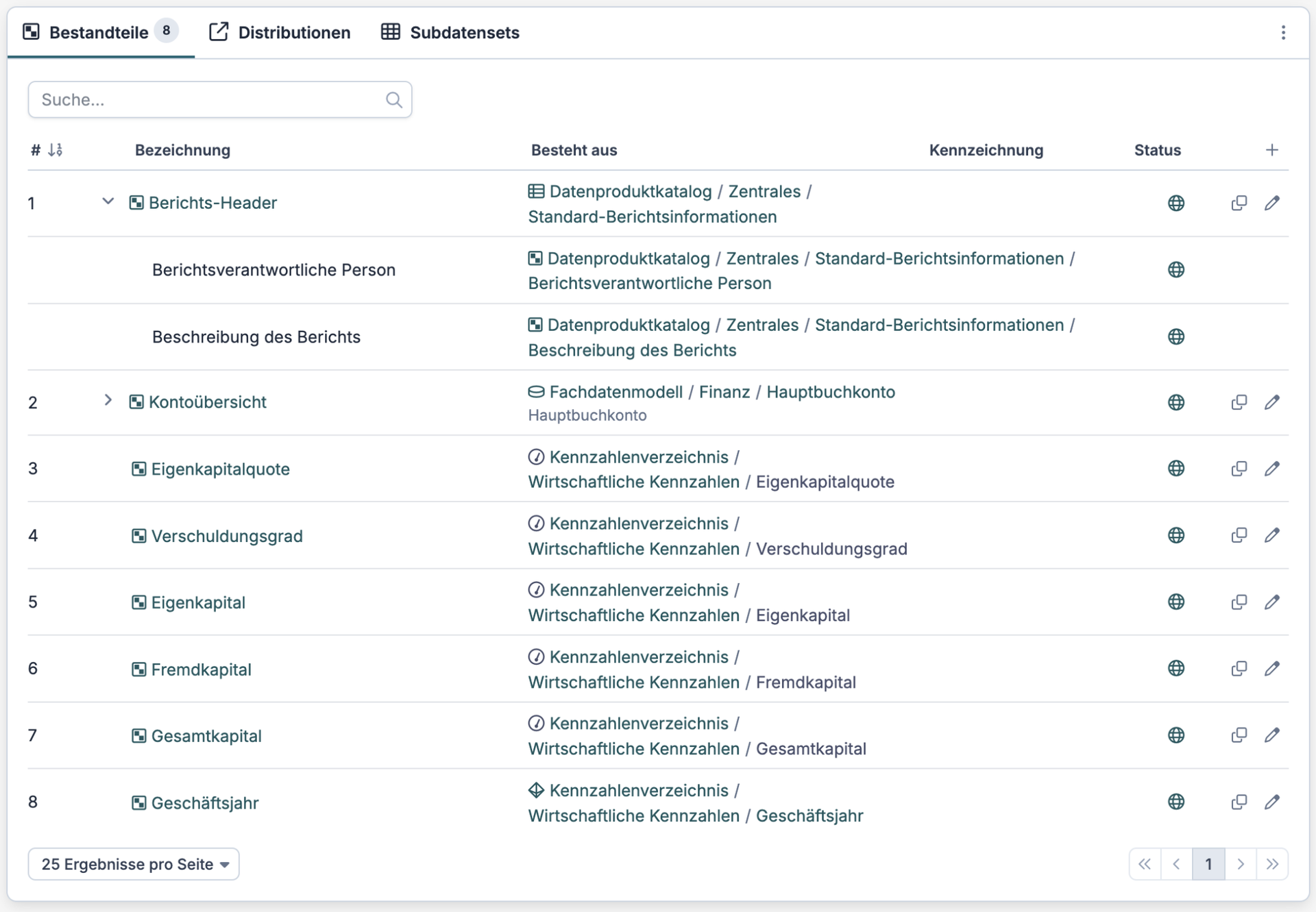dataspot. 2025.1 is now available
The latest release sets new standards: Highest performance and full transparency even with large datasets, improved usability when working with datasets, more precise customization via YAML, and top-notch connectivity to databases, storage systems, and data services thanks to new connectors. With these innovations, dataspot. takes your metadata management to a whole new level.
Enhanced Connectivity
With this release, dataspot. takes connectivity to databases, storage systems, and data services to the next level. Thanks to our new Connector Framework, metadata can now be connected more easily via a standardized approach. Three connectors are already available within this framework:
- DatabaseConnector: The successor to our JdbcMetadataConnector. It allows metadata structures from JDBC-enabled databases to be read and imported into dataspot., enabling seamless integration and efficient metadata management.
- StorageConnector: Allows metadata structures from storage systems such as AWS S3 to be read and imported into dataspot., greatly expanding the possibilities for file-based metadata management.
- Databricks Connector: This new connector enables reading of data structures and lineage information from the Databricks Unity Catalog. Users can now efficiently integrate and manage Databricks metadata in dataspot.
Additionally, our partner bluetelligence now provides a new connector for native metadata integration with Microsoft Power BI, alongside the previously available SAP Metadata API.
These new connectors offer a flexible and powerful solution to manage and leverage metadata efficiently.
Improved Customization with Profiles
Customization in dataspot. is now more structured and easier to manage. Previously, all annotations were stored and edited in a single YAML configuration. With the new release, annotations can now be divided into individual profiles, providing a clearer structure, better assignment, and easier management.
In addition to standard annotations, model-specific configurations can now be created via additional profiles. These profiles can be assigned to one or multiple models, allowing flexible and targeted customization.
A new highlight is the ability to view the total of all configurations per model, offering a comprehensive overview and simplifying management and control. All configurations are now versioned, making changes traceable and transparent. Protection against overwriting when editing configurations simultaneously is also integrated in this release.
Enhanced Usability and Dataset Usage
With the new release, datasets have been significantly improved in both usability and versatility. Previously, each component required a separate name to be assigned. Now, the underlying element’s name can be automatically adopted, saving time and simplifying the process.
Furthermore, the types of elements that can be linked have been expanded. Previously, only attributes, measures, dimensions, and data quality indicators could be linked. Now, entire data or business objects, datasets, and data types can also be linked as underlying elements, enabling more flexible and comprehensive dataset usage. This helps users design their data products more efficiently and precisely.
Better Performance and Transparency, Even with Large Datasets
This release introduces numerous improvements that make working with large (meta)data volumes much easier:
- Search Performance: The search function has been optimized to deliver fast and accurate results even with large datasets, helping users find and utilize the information they need more efficiently.
- Frontend Load Indicators: To increase transparency, longer loading processes in the tool (such as the lineage diagram and search function) are now displayed with loading indicators. Users can immediately see that background processes are running, greatly enhancing the user experience.
New Features in dataspot. 2025.1



